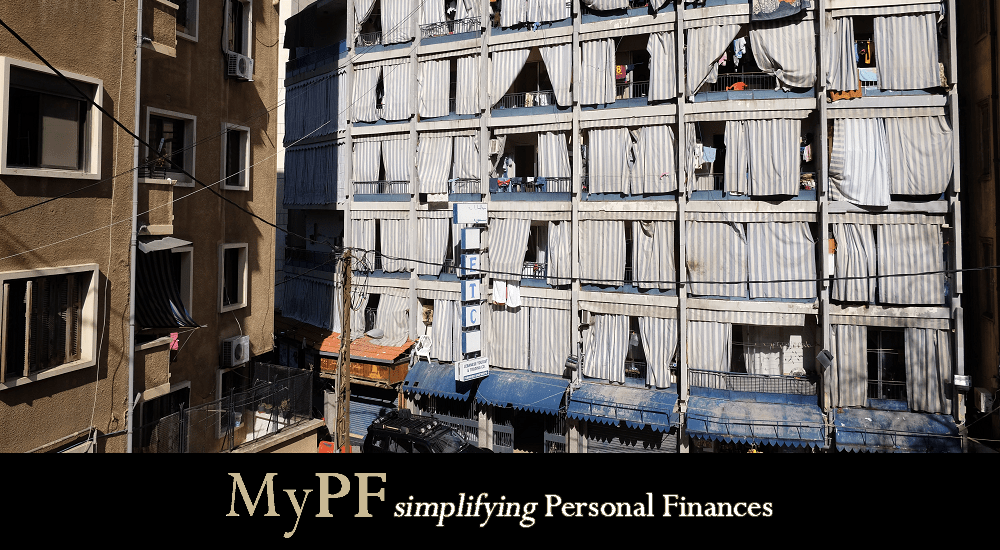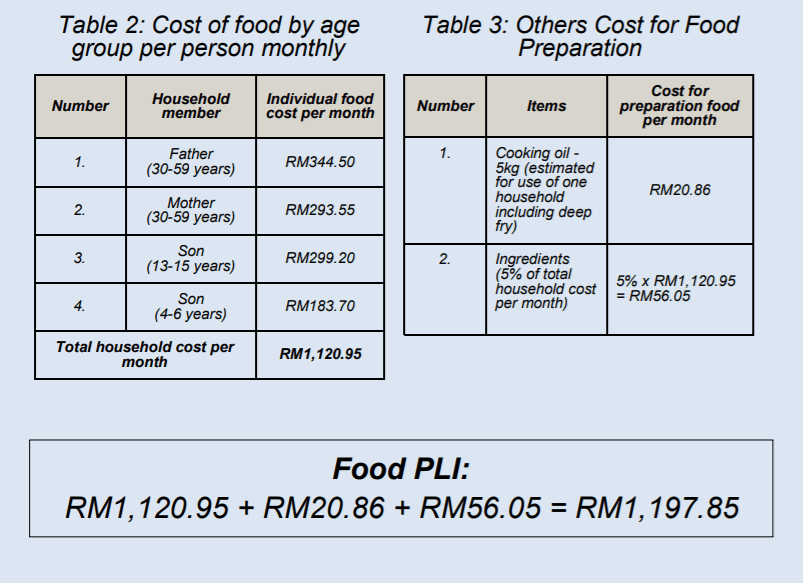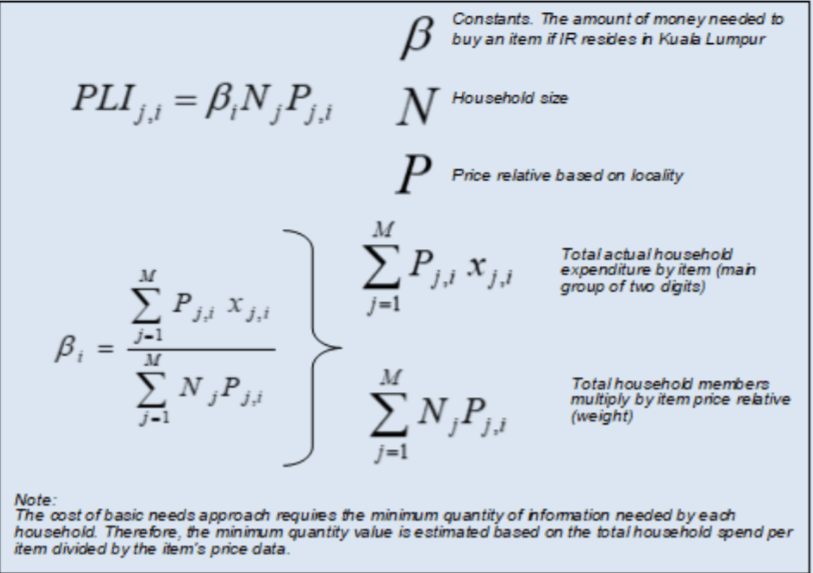DOSM released a newly revised poverty line income (PLI) for 2019. Learn what has changed from the previous PLI in 2016.
The national poverty line income (PLI) have been revised recently by the Department of Statistics Malaysia (DOSM), with the poverty line revised from RM908 to RM2,208 in July 2020.
This mean that over 400,000 households in the country with monthly incomes below this level are considered to be living in poverty.
Poverty is a state or condition in which a person or community lacks the financial resources and essentials for a minimum standard of living. Poverty means that the income level from employment is so low that basic human needs can’t be met. ~ Investopedia
According to Malaysia’s chief statistician, Datuk Seri Mohd Uzir Mahidin, the new figure was derived from changes in methodology which press the importance of healthy eating and quality basic needs.
Contents
How is the PLI calculated?
The DOSM receives data from various agencies to factor into their calculations, in particular data provided by the Ministry of Health.
For 2005’s methodology that determined the PLI of RM980, the calculation factored in the minimum food requirements for each household member and 106 non-food items, based on the spending patterns of the B20 group as indicated by the 2004/2005 household expenditure survey results.
For 2019’s methodology that determined the PLI of RM2,208, the calculation factored in healthy eating requirements and 146 non-food items, based on the spending patterns of the B20 group as indicated by the 2019 household expenditure survey results.
From the aspect of food items before this we looked more towards the concept of ‘minimum’, but this time we stress on the discussion with the Health Ministry – optimum and healthy and quality, and it is based on the 2017 Recommended Nutrient Intake and the Malaysian Dietary Guidelines,” – Datuk Seri Mohd Uzir Mahidin, Malaysia’s Chief Statistician.
Food items include fish, meat,cereal,rice,vegetables, milk, poultry, and bread. For non-food items including clothing and shoes, fuel and utilities, furniture, transport and communication, education, and health.
To calculate, for example, a calorie intake for a household with 3.9 people is 7,820 kcal for 2019 compared to 6,474 kcal for 4-people household in 2016. The example of the calculation is as below:
Source: Household Income and Basic Amenities Survey Report 2019 (page 103), Department of Statistics Malaysia
For non-food items, the calculation is method is as below:
Source: Household Income and Basic Amenities Survey Report 2019 (page 103), Department of Statistics Malaysia
What does this mean for Malaysia?
Referring to the new 2019 methodology, the PLI for household is revised to RM2,208 per month (RM1,038 for non-food items and RM1,169 for food).
New classification of household income
| Classsification | Group | Median (RM) | Average Income (RM) | Income Limit (RM) |
|---|---|---|---|---|
| B40 | B1 | 1929 | 1849 | Less than 2,000 |
| B40 | B2 | 2786 | 2803 | 2,500- 3,169 |
| B40 | B3 | 3556 | 3561 | 3,170- 3,969 |
| B40 | B4 | 4387 | 4395 | 3,970- 4,849 |
| M40 | M1 | 5336 | 5346 | 4,850- 5,879 |
| M40 | M2 | 6471 | 6477 | 5,880 - 7,099 |
| M40 | M3 | 7828 | 7841 | 7,110 - 8,699 |
| M40 | M4 | 9695 | 9730 | 8,700- 10,959 |
| T20 | T1 | 12586 | 12720 | 10,960 -15,039 |
| T20 | T2 | 19781 | 24293 | 15,039 and above |
Source:Department of Statistics Malaysia
This provides a new look the poverty rate in Malaysia, improving from 7.61% in 2015 to 6.5% in last year. This mean a decrease in households considered living in poverty, from 525,743 households in 2016 to 495,441 households in 2019.
When grouped by age of head of the family, we see the following data for households in Malaysia that fall below the PLI.
- 16.3% for ages 45 to 49
- 15.4% for ages 40 to 44
- 13.1% for ages 50 to 54
- 12% for ages 65 and above
The new method also saw an improvement in absolute poverty in Malaysia’s urban and rural areas, from 4.8% and 17.5% in 2016 to 3.8% and 12.4% in 2019.
According to Department of Statistics Malaysia, absolute poverty is defined as a situation in which household income is insufficient to meet basic needs of food, shelter and clothing.
For the absolute poverty level in the different states in 2019, the following data has been recorded.
- 19.5% Sabah
- 12.4% Kelantan
- 9% Sarawak
- 8.8% Kedah
- 7.3% Perak
- 6.1% Terengganu
- [National absolute poverty level of 5.6%]
- 4.3% Negeri Sembilan, Pahang
- 3.9% Melaka, Perlis, Johor
- 3.1% Labuan (Wilayah Persekutuan)
- 1.9% Penang
- 1.2% Selangor
- 0.4% Putrajaya (Wilayah Persekutuan)
- 0.2% Kuala Lumpur (Wilayah Persekutuan)
Hardcore poverty percentage also saw an improvement from 0.62% to only 0.4% in 2019, which is from 45,004 households in 2019 to only 27,158 households in 2019.
According to Suzana Md Samsudi, Fellow, Centre for Economy and Social Studies, Malaysian Institute for Islamic Understanding (IKIM) to the New Straits Times, absolute hardcore poverty has been defined as a condition in which the gross monthly income of a household is less than half of PLI.
Overall
This new PLI raises the official percentage of those living below the poverty line significantly. It also raises questions on whether the minimum wage which at RM1,100 – RM1,200 would still leave many households below the poverty line. The timely revision of the PLI can be an impetus for companies to revise the wages paid to employees, taking into account the changes to cost of life requirements (food and non-food items). The new PLI also raises awareness for Malaysians to reassess their income and expenses.
You May Also Like
- 5 Considerations When Dealing with Lifestyle Creep
- Malaysia’s Budget 2020 Expectations
- 5 Steps To Manage Your Finances In The New Normal
- Besides Salary, What About Employee Benefits?
- What to Do with Your Salary Increment or Bonus
What is your opinion about the newly revised poverty line income? Share with us here.








Leave A Comment